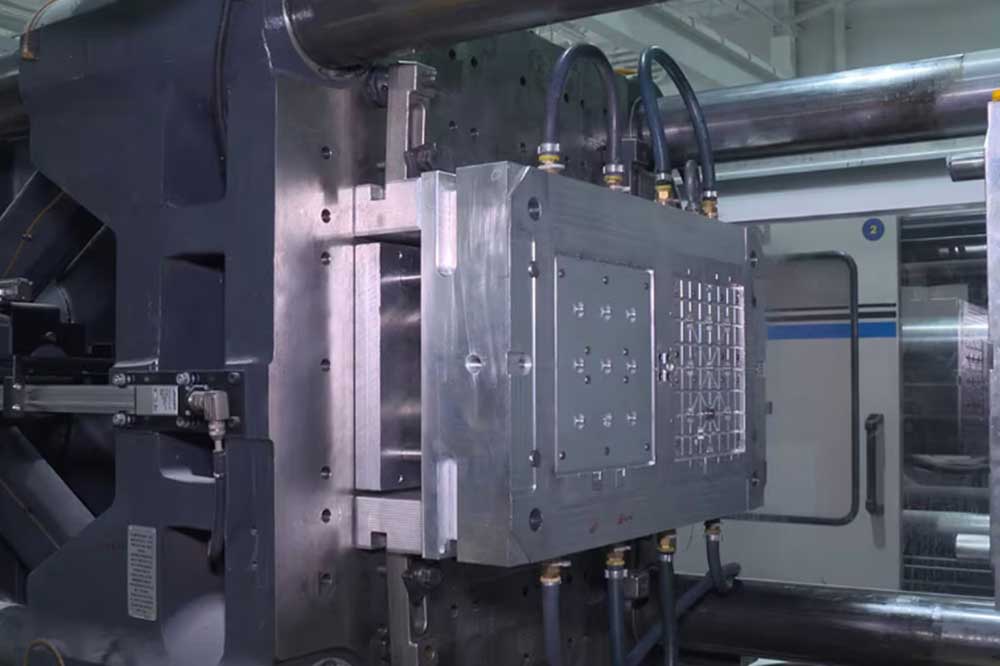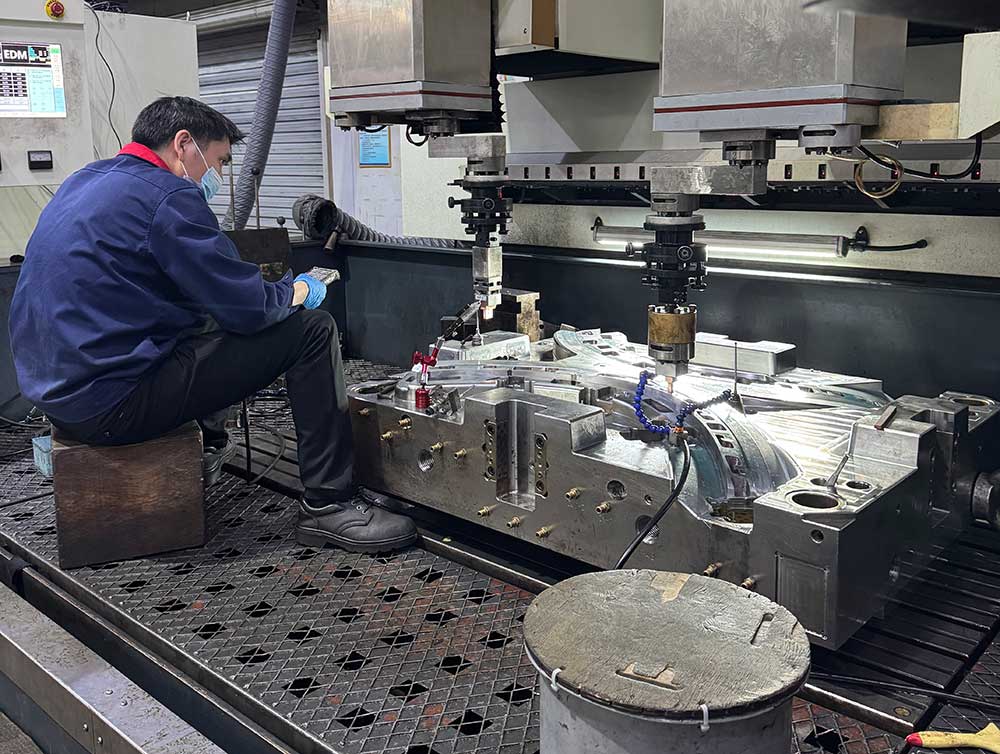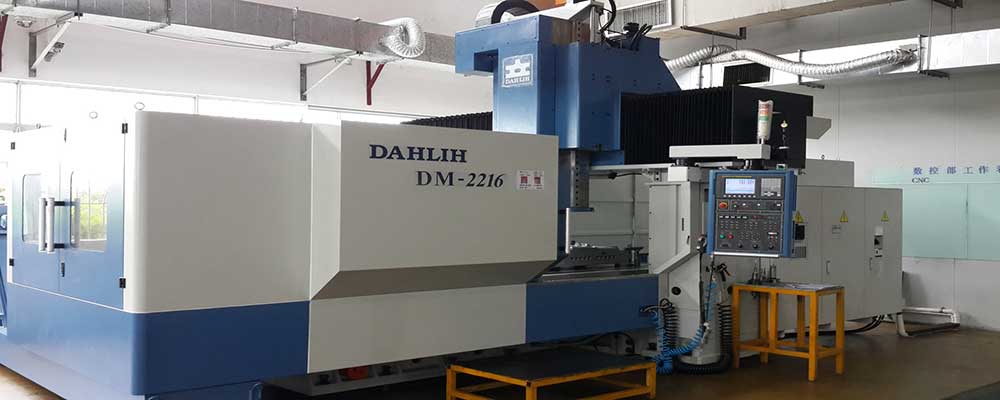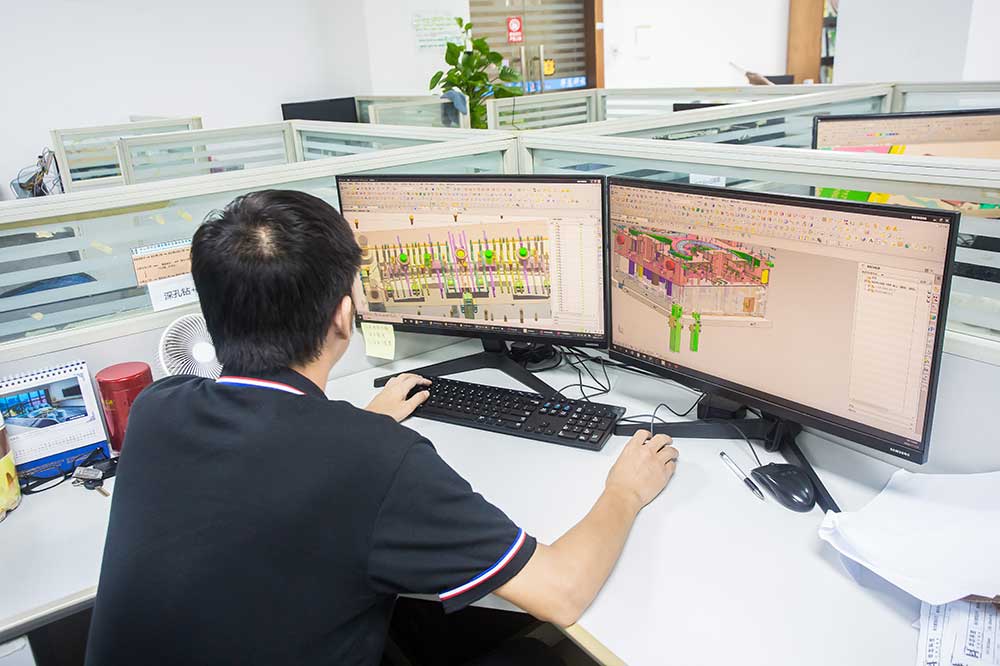6 Solutions for Undercut Features in Injection Molding: Technical Analysis
Injection molding undercuts are recessed or protruding features on a part that prevent or complicate ejection from a straight-pull mold. Although designers generally minimize undercuts, many products – such as threaded caps, snap-fit clips, seals, and interlocking parts – require undercuts for functionality. For procurement teams, undercuts can add cost, complexity and longer cycle times to a molding project. Without special mold actions, an undercut feature can damage the part or tooling during ejection.
Understanding how to mold undercuts effectively is therefore crucial to avoid expensive redesigns or secondary operations. In this article, we introduce six techniques for achieving undercuts in injection molding, explain their concepts, benefits, applications, limitations, and design considerations, and show how each method addresses the challenges of undercut features.

First :Draft Angles
A draft angle is a slight taper applied to the vertical faces of a part, sloping them away from the direction of mold opening. Draft angles are normally used to prevent undercuts by ensuring the part can slide out smoothly, but they also play a role in handling unavoidable undercuts. Applying generous draft on surfaces adjacent to an undercut can reduce friction and allow tiny clearance as the part ejects. For example, standard practice is to include 1°–2° of draft per side on most external and internal walls.
-
Concept: Draft is a taper on the molded feature’s walls so they are not parallel to the ejection direction. This taper ensures the part has clearance as it separates from the mold, preventing it from “dragging” against the tool. When an undercut is present, adding draft to neighboring walls helps the part move slightly before the undercut locks. In effect, draft can turn a severe undercut into a manageable one.
-
Benefits: A proper draft makes ejection easier and avoids part damage. It also helps release textured surfaces: even micro-textures on the cavity walls create tiny undercuts that will “lock” the part unless draft is present. For polished or textured finishes, the recommended draft is higher – e.g. at least 3° for light textures and up to 5° for medium textures. This extra draft lets the material relax and clear those micro-undercuts, preventing scratches or drag marks.
-
Applications: Draft is used on almost all injection-molded features. In undercut areas, designers often bevel or slope edges such as snap-hook tails, side latches, or raised ribs so the part can eject. Even in cases where a small undercut is needed (e.g. a slight lip to hold a gasket), adding draft to the part’s walls can avoid more complex mechanisms.
-
Limitations: Excessive draft can alter the intended geometry – for example, a very steep draft might reduce a mating surface or alter a precise diameter. There may also be aesthetic or functional reasons to keep walls straight. In some cases, increasing draft too much might require enlarging mating parts. Thus draft alone can often minimize but not fully eliminate undercut needs.
-
Design Considerations: Part designers should include draft early. A common guideline is 1° per inch of wall depth, but the exact angle depends on factors like material shrinkage, surface finish, and molding depth. Any external undercut on a parting line should have a mating draft on the opposing side to allow clearance. For example, if molding a side snap, both the protruding tab and the cavity must have complementary draft angles. Overall, more draft is usually better – prototyping without draft may work, but injecting with draft from the start speeds up moldability and avoids costly revisions.
Second :Side Actions
Side actions (or slides) are moving mold inserts that slide into the parting line from the side during mold closing, then retract before ejection. They create undercut geometries that are perpendicular to the main mold opening, which cannot be formed by a simple two-plate mold.
-
Concept: A side action is a mechanical or hydraulic core inserted parallel to the parting surface. When the mold closes, cams or actuators drive the side core into the cavity. Plastic then flows around this core to form the undercut feature. After the part is molded, the side action is pulled out (laterally) before the mold opens, allowing the part to release. In effect, the side core “creates” the undercut and then disappears for demolding.
-
Benefits: Side actions enable complex side geometries and latch features that would be impossible in a straight-pull mold. They expand design freedom, allowing snap-fit tabs, bosses on the side of a part, or locking features on the flanks. Because the side core is integral to the mold, the resulting undercut is strong and precise.
-
Applications: Side cores are common in automotive and consumer parts. For example, a housing with a molded-in hinged clip or a tool handle with a side locking pin usually requires a side action. Anytime the plastic feature is on a plane that is parallel to the mold’s parting line, a side action can form it.
-
Limitations: Adding side actions significantly increases mold complexity and cost. They require additional moving parts, guide pins, and actuators (cams, hydraulics or cams). Each side insert must be designed specifically for the part, and its mechanism must be carefully aligned and maintained. Side actions can also slow the cycle time slightly, since the mold must pause to remove the core. Because of this, engineers always ask whether the design truly needs a side action or if the feature can be redesigned (e.g. by adjusting the parting line or adding a slot).
-
Design Considerations: Planning for side actions affects the parting line and tool layout. The undercut feature must be located so that a side core can reach it at mold close. Angle pins or guide pins align the core; cams (built into the mold plates) push the core in place when clamping. Retracting the core (via hydraulic cylinders or mechanical levers) is timed just before the mold opens. Designers should ensure there is enough clearance for the slide path and that the core’s tip is properly shaped to form the undercut. Materials of construction for side cores are high-wear steels, since they contact molten plastic. Finally, any side action adds to tooling lead time, so the design must justify the complexity.

Third :Collapsible Cores
Collapsible cores are specialized core inserts that collapse (contract radially) after molding, allowing parts with internal undercuts or threads to be ejected. Typically used for cylindrical parts, a collapsible core molds inward-facing features without needing an unscrewing motion.
-
Concept: A collapsible core is built of segmented steel (often spring-loaded) that expands to form an internal cavity during injection, then collapses inward to release the part. In practice, the mold contains a hollow core pinned to the ejector mechanism. After the plastic cools, the pin is withdrawn and the core’s segments retract or fold together. This shrinking of the core creates clearance behind undercut walls, and then the part is ejected. Essentially, the core “grows” to shape the plastic and then “shrinks” to free the part.
-
Benefits: Collapsible cores enable molding of internal threads, 360° undercuts, and deep bosses in one shot. Without them, features like bottle threads or lamp sockets would require post-mold machining. Using a collapsible core yields very precise internal features (e.g. fine-pitch threads) and reduces cycle time compared to secondary operations. Because the core collapses straight inward, cycle times are often shorter than unscrewing molds (see below). In fact, experts note a collapsible-core mold can achieve a threaded undercut at roughly one-third the cost and half the cycle time of an unscrewing mold.
-
Applications: Common in closures and cylindrical parts. For instance, plastic bottles and jars with internal neck threads, lamp bases with screw-in sockets, or threaded grips often use collapsible cores. Medical and hardware components with internal screw threads are also candidates. Essentially any part with an internal undercut that is axisymmetric may use this method.
-
Limitations: Collapsible cores only work for relatively round profiles because the core must contract uniformly. They cannot form non-circular or heavily profiled internal shapes. Also, the mechanism is more complex and costly than a simple core: the core and pin must be precisely machined and fitted. Sealing the core to prevent flash (leakage of plastic between segments) is critical, which can add maintenance. Over time, the moving segments wear, requiring precise alignment on each cycle. Finally, note that collapsible cores are usually limited to thermoplastics (the high heat of die casting would damage the mechanism).
-
Design Considerations: Collapsible cores are custom-engineered. Designers must specify the required internal feature (e.g. thread depth, diameter). The core is often actuated by the standard ejector system – when the ejector plate moves, the core pins pull out and the core collapses. Cooling channels must be designed so the core temperature is uniform. Each core segment is fitted to a matching pin to keep them in position during molding.
The number of segments (6, 8, 12, etc.) is chosen based on undercut depth and diameter: more segments allow greater collapse range (DME’s S-Core system can handle diameters from 6 mm up to 400 mm). When designing, ensure the molding machine has enough hydraulic or ejector force to collapse the core, and confirm there’s space in the cavity for the segments to fold without interference.
Fourth :Slides and Lifters
Slides (also called sliders or cam-driven inserts) and lifters are mold components that physically move to clear undercut features. While similar to side actions, slides and lifters typically describe two related mechanisms:
-
Slides (Sliders): These are blocks that move horizontally (parallel to the parting line) by means of a cam or guide. During mold closure, a cam pushes the slide into place; after molding, the cam withdraws the slide before ejection. Slides form external undercuts, such as angled grooves or side protrusions, by inserting into the cavity. For example, a slide might create a locking undercut on the outer circumference of a part. The motion is guided by channels or angle pins to ensure precise placement.
-
Lifters: Lifters are elements that move generally at an angle or vertically within the cavity. Often actuated by the ejector plate, a lifter tilts or pushes a feature out from an internal undercut as the mold opens. For instance, a slender part with an internal groove might use a lifter that swings up, releasing the groove and lifting the part free. Unlike slides, lifters address internal or top-side undercuts.
Benefits: Both slides and lifters allow the mold to form features that normal ejection would catch. Because they are cam- or pin-actuated, their motion is self-contained; the operator does not need to handle them separately. Slides can form robust external features (like cams or angled bosses), while lifters handle delicate or internal hooks. They expand the range of design without major tooling changes.
Applications: A classic slide application is in box enclosures, where a latch or snap is molded on the side wall. A slide inserts to form the latch and then retracts. Lifters are common for internal ribs and angled faces inside cavities, such as undercut ribs on a handle hole. They are also used for small tab features or angular recesses.
Limitations: As with side actions, adding slides and lifters increases tooling complexity and cost. Slides especially require precise cam design and mold space. Space constraints inside the mold may limit how large a slide can be. Lifters can sometimes leave slight marks or require additional draft. Both require synchronized motion; if a slide or lifter fails to actuate properly, it can damage the part or tool. Maintenance can be significant as well, since these components wear from repeated cycles.
Design Considerations: When using slides, designers should ensure the undercut feature is reachable by the slide and that sufficient clearance exists for the slide travel. The cam angle determines how much the slide moves – this must match the feature geometry exactly.
For lifters, the angle and stroke must be calculated so that the lifter clears the undercut without binding. During mold opening, the ejector plate often triggers the lifter’s motion. It’s important that the part remains supported until the lifter is fully retracted. Materials for slides and lifters must be durable (high-quality tool steel) and well-lubricated. Using CAD simulations can help visualize the slide/lifter movement and prevent collisions.

Fifth :Unscrewing Molds
An unscrewing mold is an injection mold with a built-in rotating core or cavity designed to unscrew the part as it ejects. This method is used to mold threaded parts or other helical undercuts, eliminating the need for post-molding tapping or cutting.
-
Concept: After the plastic solidifies, the core (or sometimes the entire cavity half) is rotated relative to the other half, effectively “unscrewing” the plastic part from the mold. In practice, the mold incorporates a rack-and-gear or hydraulic mechanism: a motor or hydraulic cylinder engages gear teeth on the core, turning it by the exact thread pitch. The part stays stationary (or is held by a stripper plate) while the core spins, disengaging the thread. Only then does the core pull away normally.
-
Benefits: Unscrewing molds allow high-precision threaded features – for example, fine threads on caps and closures – without manual post-processing. They produce very clean, accurate threads because the mold cut is taken directly from the tool steel. This eliminates tap/rivet time and ensures parts are true to spec. Unscrewing molds also handle other “helical” undercuts, such as cross-drilled holes or spiral ribs, by reversing the motion.
-
Applications: The most familiar uses are bottle caps, pump closures, jar lids, and threaded connectors. Any plastic part that screws on (or off) something typically comes from an unscrewing mold. For instance, medical syringe caps, sprinkler valves, shampoo bottle lids, and fasteners can all be molded this way. Essentially, any undercut that forms a helix (thread) around a cylindrical core is made with this technique.
-
Limitations: Unscrewing molds are complex and slow down cycle time because of the rotation step. The mold must pause after cooling to rotate – this adds seconds or more, depending on the thread length. The mechanism (motors, gear racks, cams, sensors) adds cost and maintenance. Precise control is needed to avoid overtightening or breaking threads. The design is also limited to parts with cylindrical symmetry; you cannot unscrew an arbitrary shape. Furthermore, stripping off smaller threads may risk scratching, so often a stripper plate or specialized cam is used (as a “soft-start” for threads).
-
Design Considerations: The core is usually on the moving (plastic injection) side, and the unscrewing mechanism can be motor-driven or manually operated for simpler molds. Angle gear racks or belts may be used. The thread geometry (lead, depth) must be exactly matched by the core. Cooling channels may require helically-drilled passages. To ensure uniform ejection, some molds incorporate a cam acting on the stripper plate, mimicking how a hand unscrews a cap (the stripper lifts as threads turn).
Because unscrewing molds are often used for consumer packaging, you must also consider how customers use the part. For example, ensuring the plastic cap will screw on smoothly requires accounting for the twist in the mold ejection. In short, unscrewing molds demand careful synchronization of rotation and ejection to avoid part damage.
Sixth :Core Pulls
Core pulls are actuated cores that slide out of the part during ejection, typically used for side-hole undercuts or features that run along the side of the part. Unlike simple fixed cores, a core pull moves axially (along the mold opening direction) to free the undercut before ejection.
-
Concept: A portion of the mold core is connected to a hydraulic or pneumatic cylinder (or to the machine’s core-pull circuits). During injection, the core is extended into the cavity to form an internal or side feature. After the resin cures, the core pull is retracted before the mold opens. In some designs, the core withdraws fully; in others, it retracts slightly to clear the undercut. The part is then ejected normally, with the core no longer impeding its path.
-
Benefits: Core pulls offer a relatively simple way to handle linear undercuts (such as holes or pockets that run along the part’s length). Compared to slides or side actions, a core pull is straightforward to implement if there is clearance for its movement. They can be driven by the molding machine’s core-pull (hydraulic) function, requiring minimal extra automation. Core pulls can enable undercuts on parts that are mostly straight-pull moldable, without the full complexity of a cam slide.
-
Applications: Typical uses include forming deeper side holes, internal ribs, or cavities in a part’s sidewall. For example, a long rod with an internal hole or a block with a groove parallel to the parting line may use a core pull. They are common in pump housings, engine components, and plastic connectors where holes through the side are needed.
-
Limitations: Adding a core pull still introduces cost: the hydraulic cylinder, valving, and seals add parts. There is also potential for leaks (oil or air) which can degrade over time. The travel distance of the core pull is limited by space in the mold and the cylinder’s capacity. If very long travel is needed, multiple stages or special mechanisms (telescoping cylinders) may be required. The cycle time may increase slightly because the mold must dwell while the core retracts, although this is usually shorter than an unscrewing cycle.
-
Design Considerations: Core pulls must be carefully aligned and guided, often with bushings or linear bearings. The core shape should taper slightly (like a small draft) to reduce friction. Designs often use pneumatic drive for short, quick strokes and hydraulics for longer, heavy pulls.
For example, for a deep core that needs 30–50 mm of travel, a hydraulic cylinder provides consistent force. The core pull’s timing is typically set so that it retracts right before the mold opens or just after the ejector starts moving. The mold cavity must have enough space around the undercut for the core to move without hitting other parts of the tool. It’s also common to include a buffer or shock absorber so the retraction doesn’t snap the part.
Common Challenges of Injection Molding Undercuts and Solutions
Undercuts inevitably add complexity and cost to injection molding. Common challenges include:
-
Increased Mold Complexity: As noted, undercuts often require extra slides, cores, or mechanisms, which drive up tooling costs. More moving parts mean more machining, assembly, and maintenance expense.
-
Ejection Difficulty: Without proper design, undercuts can cause part damage or sticking. Hard materials or rigid parts amplify this problem. For example, glass-filled nylon with an undercut may not flex enough to pop out, leading to tears or chips on the edge.
-
Extended Cycle Time: Adding motions (unscrewing, core retracting) lengthens cycle time. Each extra action adds seconds to every part, which matters for high-volume runs.
-
Assembly Complications: Parts with undercuts may be harder to fit with mating components, especially if made of stiff materials. Undercut parts often require tight tolerances in assembly, so any slight deformation during ejection can cause misalignment.
To overcome these, best practices include:
-
DFM (Design for Manufacturing): Simplify undercuts where possible. Designers should only use undercuts when truly needed. For example, if a small lip is solely for aesthetics, consider removing it. If a snap feature can be designed with enough draft, avoid a slide.
-
Material Selection: Using more flexible or elastic polymers (like TPE/TPU) can make ejection easier. Flexible materials can deform slightly to clear an undercut during ejection.
-
Accurate Draft and Radii: Ensure all non-undercut walls have appropriate draft (as discussed) and sharp internal corners are filleted. This minimizes stress concentrations when ejecting.
-
Proper Tooling Implementation: Choose the right undercut solution for the feature. If only a small protrusion is needed, a simple lifter might suffice; if a full 360° thread is needed, use unscrewing. Mixing and matching – for example, using both a slide and a core pull on the same part – can sometimes yield an efficient design.
-
Prototyping and Simulation: Modern CAD/mold-flow tools can simulate how an undercut will behave during ejection. Running virtual mold opening can reveal potential collisions or high-stress areas before building the mold.
By anticipating these challenges and choosing the right methods (as outlined above), manufacturers can mold parts with undercuts successfully and reliably.

Why Choose Huazhi for Injection Molding Undercut Solutions
When it comes to complex undercut molding, Huazhi Mould offers unparalleled expertise and capability. Huazhi is a technology-driven mold builder specializing in large, medium-sized, multi-cavity, and high-precision molds. They have delivered over 8,000 sets of molds across industries, from automotive to consumer electronics, proving their technical strength and production capacity.
With a professional team of 180 engineers (each averaging 20+ years of experience), Huazhi can analyze your part comprehensively and suggest the most efficient undercut solution – whether that’s a complex collapsible core or an optimized draft.
Huazhi’s commitment to innovation means they continuously upgrade equipment and techniques. They maintain long-term partnerships with leading companies in the US, Japan, Germany, Canada and elsewhere. Global clients trust Huazhi to deliver precision molds – including those with demanding undercut features – on time and on budget. The company routinely tackles large molds (single parts up to 25 tons in weight) and uses world-class machining centers to meet tight tolerances.
Relevant Standards:
- ISO 2768(General Tolerance Standard)
- DIN 7168(Machining Dimensional Tolerances)
- GB/T 1804(Chinese Dimensional Tolerance Standard)
Whether your project requires automotive air-conditioning components, medical device housings, or consumer products with undercuts, Huazhi has the proven track record. Their engineers leverage the latest design software and mold-flow analysis to ensure the undercut solution (draft, slide, core pull, etc.) is robust. Post-build, Huazhi performs detailed quality inspections. In short, choosing Huazhi means getting a partner with deep undercut experience, global expertise, and a reputation for high-precision molds.

Conclusion
Injection molding undercuts pose challenges, but the six methods above provide practical solutions. By using proper draft angles, or adding side actions, collapsible cores, slides, lifters, unscrewing mechanisms, or core pulls where appropriate, designers can mold even complex undercut features.
Each technique has trade-offs, so the right choice depends on the part’s geometry, volume, and material. Huazhi Mould’s advanced capabilities ensure that whatever undercut solution you need, it will be engineered and manufactured to high standards.
Ready to tackle undercuts without compromise? Contact Huazhi today to discuss your design. Their team will help you determine which undercut method fits your part and will provide a competitive mold quotation. With Huazhi’s global expertise and precision tooling, your project can avoid costly rework and enjoy smooth production.
FAQ
Q1: What are injection molding undercuts?
A1: In injection molding, an undercut is any recess or protrusion on the part that prevents a straight-pull ejection. Examples include internal threads, side holes, snap-fit hooks, and flanges. Undercuts require special mold features (slides, cores, etc.) to release the part without damage.
Q2: How do draft angles help with undercuts?
A2: Draft angles are tapered walls that let a part move slightly as it cools and shrinks. By adding draft near an undercut, the part can “tilt” or shift a tiny amount to clear the feature during ejection. In practice, designers add 1–2° of draft per side (more for textured surfaces) to reduce friction and make any undercut easier to release.
Q3: When should I use a collapsible core versus an unscrewing mold?
A3: Use a collapsible core when you have an internal, circular undercut like threads inside a cylindrical part. Collapsible cores are ideal for closures and bottle-neck threads and are faster than unscrewing molds. Use an unscrewing mold when the undercut is a helical feature on a part’s exterior (like an outer thread or cap). Unscrewing molds are more complex but give precise external threads.
Q4: What are common limitations when designing undercuts?
A4: The main limitations are cost and complexity. Every added mechanism (slide, core, etc.) increases mold cost and cycle time. Material rigidity is another factor: stiff plastics eject less easily, so flexible materials are often preferred for undercut parts. Also, non-cylindrical internal undercuts (like square holes) cannot use collapsible cores and might need lifters or slides. Designers must balance the part’s function with practical molding methods.
Q5: Can undercuts be avoided or simplified?
A5: Often, yes. Parting-line adjustments or small design changes can eliminate some undercuts. For example, splitting a long undercut into two smaller ones or adding slots to release locked features. Using snap-on inserts or flexible material can also avoid complex slides. Huazhi’s engineers can review your design and suggest DFM changes, ensuring that undercuts are only used where necessary and handled in the most efficient way.
